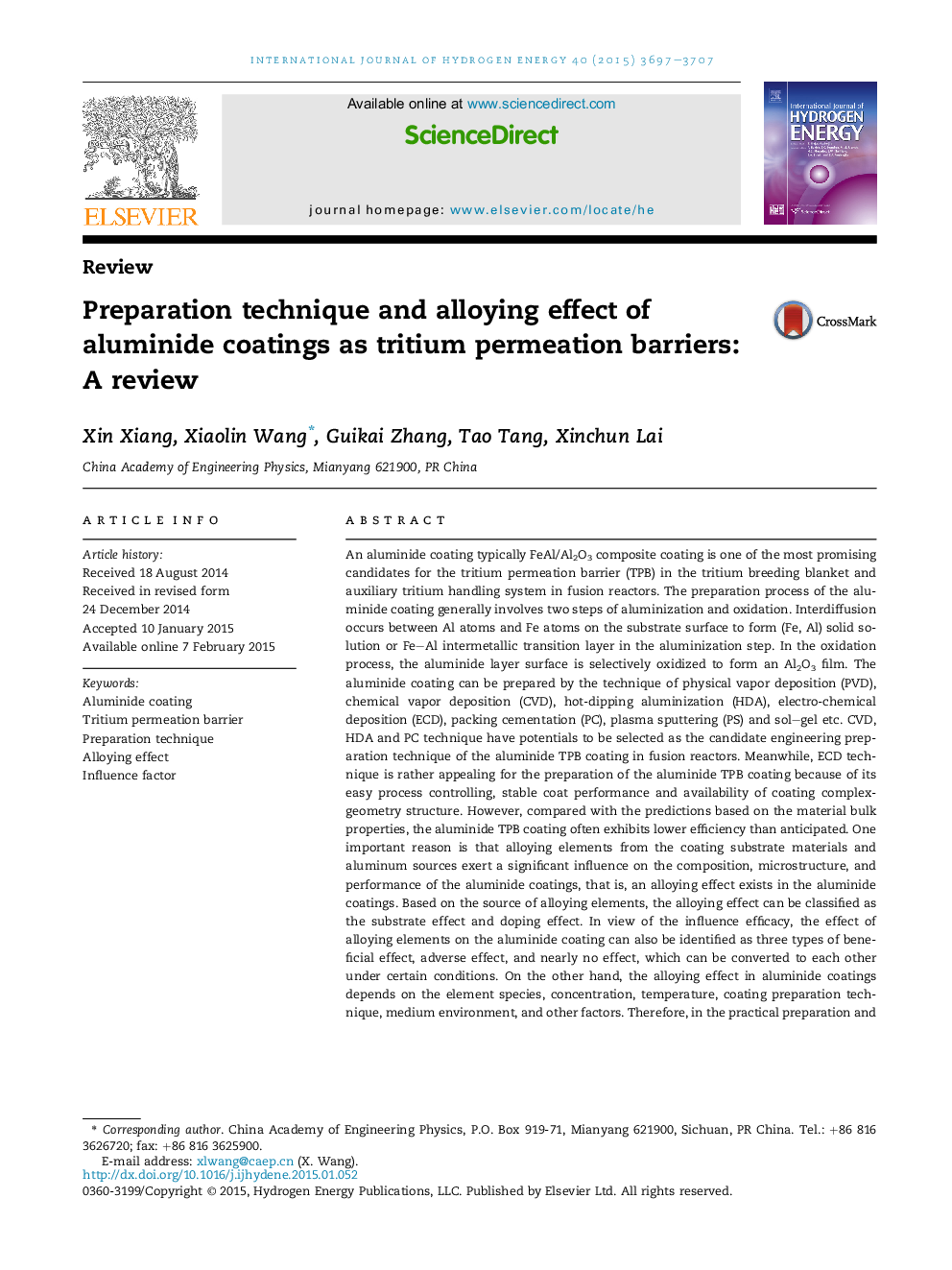| Article ID | Journal | Published Year | Pages | File Type |
|---|---|---|---|---|
| 1269799 | International Journal of Hydrogen Energy | 2015 | 11 Pages |
•CVD, HAD, PC and ECD technique have potentials to be selected as the candidate engineering preparation technique of aluminide TPB coatings in fusion reactors.•Alloying effect can be classified as the substrate effect and doping effect in aluminide TPB coatings.•The alloying effect can be identified as beneficial effect, adverse effect, and nearly no effect, depending on the element species, concentration, temperature, preparation technique, medium environment, and other factors.
An aluminide coating typically FeAl/Al2O3 composite coating is one of the most promising candidates for the tritium permeation barrier (TPB) in the tritium breeding blanket and auxiliary tritium handling system in fusion reactors. The preparation process of the aluminide coating generally involves two steps of aluminization and oxidation. Interdiffusion occurs between Al atoms and Fe atoms on the substrate surface to form (Fe, Al) solid solution or Fe–Al intermetallic transition layer in the aluminization step. In the oxidation process, the aluminide layer surface is selectively oxidized to form an Al2O3 film. The aluminide coating can be prepared by the technique of physical vapor deposition (PVD), chemical vapor deposition (CVD), hot-dipping aluminization (HDA), electro-chemical deposition (ECD), packing cementation (PC), plasma sputtering (PS) and sol–gel etc. CVD, HDA and PC technique have potentials to be selected as the candidate engineering preparation technique of the aluminide TPB coating in fusion reactors. Meanwhile, ECD technique is rather appealing for the preparation of the aluminide TPB coating because of its easy process controlling, stable coat performance and availability of coating complex-geometry structure. However, compared with the predictions based on the material bulk properties, the aluminide TPB coating often exhibits lower efficiency than anticipated. One important reason is that alloying elements from the coating substrate materials and aluminum sources exert a significant influence on the composition, microstructure, and performance of the aluminide coatings, that is, an alloying effect exists in the aluminide coatings. Based on the source of alloying elements, the alloying effect can be classified as the substrate effect and doping effect. In view of the influence efficacy, the effect of alloying elements on the aluminide coating can also be identified as three types of beneficial effect, adverse effect, and nearly no effect, which can be converted to each other under certain conditions. On the other hand, the alloying effect in aluminide coatings depends on the element species, concentration, temperature, coating preparation technique, medium environment, and other factors. Therefore, in the practical preparation and application of the aluminide TPB coatings, the alloying effect must be comprehensively analyzed, so as to obtain the best coating performance under certain conditions.
